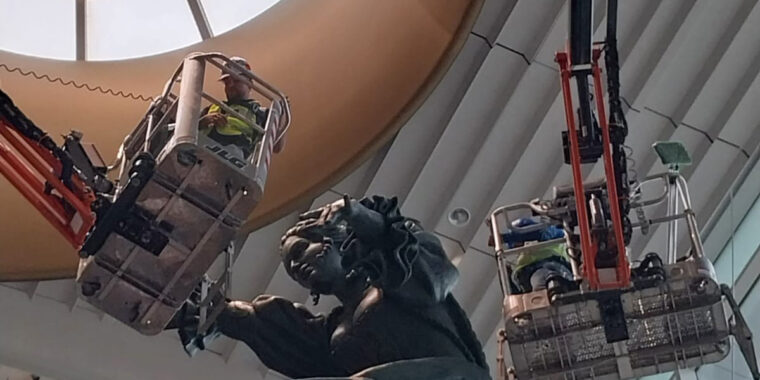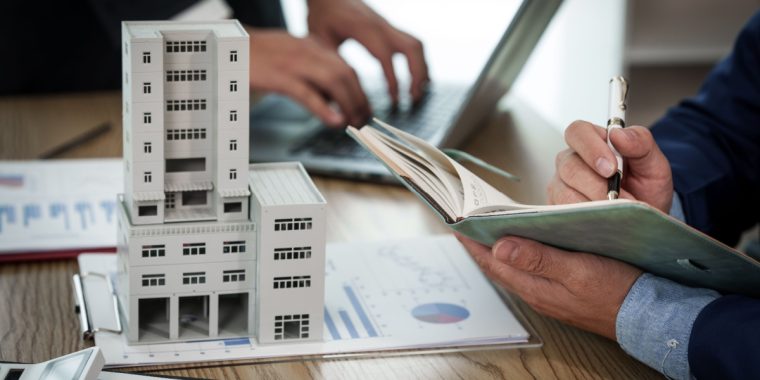Often, building owners focus on the visible, high-traffic areas regarding cleanliness and maintenance, but what about the spots that are out of sight? Steve Jobs was adamant about the aesthetic quality of Apple products, even the components customers would rarely see. He said, “For you to sleep well at night, the aesthetic and the quality have to be carried all the way through.” The same holds true for your commercial property.
High dusting, which targets hard-to-reach places like rafters, beams, pipes, and elevated art sculptures, ensures the hidden parts of your building receive the attention they deserve. These areas are often found in school gyms, manufacturing plants, atriums, airports, art exhibits, and lobbies. Over time, these spaces accumulate dust and debris that can compromise air quality, reduce tenant satisfaction, and degrade the overall aesthetic of your building. Let’s take a look at why high-dusting maintenance matters to you and your tenants.
High Dusting Presents Unique Challenges
While dusting itself is straightforward, this task presents unique challenges that standard janitorial teams can’t and shouldn’t handle. The reason? Most janitors don’t have access to specialized lifts, fall protection, or training required for high-reach cleaning and working at heights. They also often lack proper liability insurance, which could put property owners and managers — and their teams — at risk.
When neglected spaces are left unclean, they can cause poor indoor air quality. For instance, you may see a higher amount of dust, allergens, and other particles consistently released into the ventilation system.
High Dusting Takes Your Building from Dusty to Dazzling
To prevent buildup, we recommend scheduling an annual high dusting service for hard-to-reach pipes, beams, rafters, art sculptures, and other hard-to-reach surfaces.
General cleaning for retail spaces, lobbies, and high-traffic areas should be scheduled monthly. For lower-traffic areas, twice-a-year cleanings should suffice to remove dirt and dust.
Here are the key benefits of regularly scheduling high dusting.
Air Quality: Breathe Easy
Dust buildup in high spaces can silently degrade air quality over time. Removing this dust helps safeguard the air your tenants breathe and reduces the risk of respiratory issues caused by particles circulating through the building’s HVAC system.
Skyline Aesthetics: Clean from Floor to Rafters
Ensuring that even those high-up spots are clean maintains the building’s polished appearance. It’s not just about the floors and walls; having a consistently clean environment from top to bottom creates a more welcoming, professional setting for tenants and visitors alike. For property managers, tenants looking out of their office windows onto dusty beams or rafters is a surefire way to generate complaints.
Happy Tenants, Happy Property
Regular maintenance reduces complaints, keeps tenants satisfied, adds to a healthy environment, and shows that the property is well cared for. No one wants to work or live in a building where dust falls from the ceiling or the elevated art feature is noticeably dirty. By proactively addressing these areas, you can avoid dissatisfaction and prevent tenants from moving out due to poor maintenance.
High dusting is often one of those tasks that property managers overlook or defer until it becomes an issue. By implementing a scheduled annual maintenance plan, you can take high dusting off your to-do list and rest easy, knowing that A1 will handle it efficiently and safely.
A1’s Sky-High Expertise
At A1, our window cleaning service line includes high dusting solutions, a vital component of building maintenance. The earlier you take action, the better the long-term impact.
High dusting is just one way we help maintain your building’s pristine condition. Our window cleaning, birdproofing, pressure washing, and metal refinishing services are all designed to address those hard-to-reach places that standard maintenance services can’t handle.
When it comes to servicing your building’s highest points, we provide a suite of high-reach services and beyond. Our combination of training and expertise allows us to perform complex cleaning and maintenance tasks using specialized lifts, equipment, and safety protocols.
Secure a Healthier, Cleaner Building with A1
As you can see, high dusting plays a significant role in keeping your building clean, safe, and tenant-friendly. We are proud to provide services that enhance your building’s aesthetics and longevity.
Now is the perfect time to schedule high-reach maintenance before the seasonal elements cause further wear and tear on your building. Contact us today and discover how we can help you create a custom maintenance plan that fits your building’s needs and budget.










